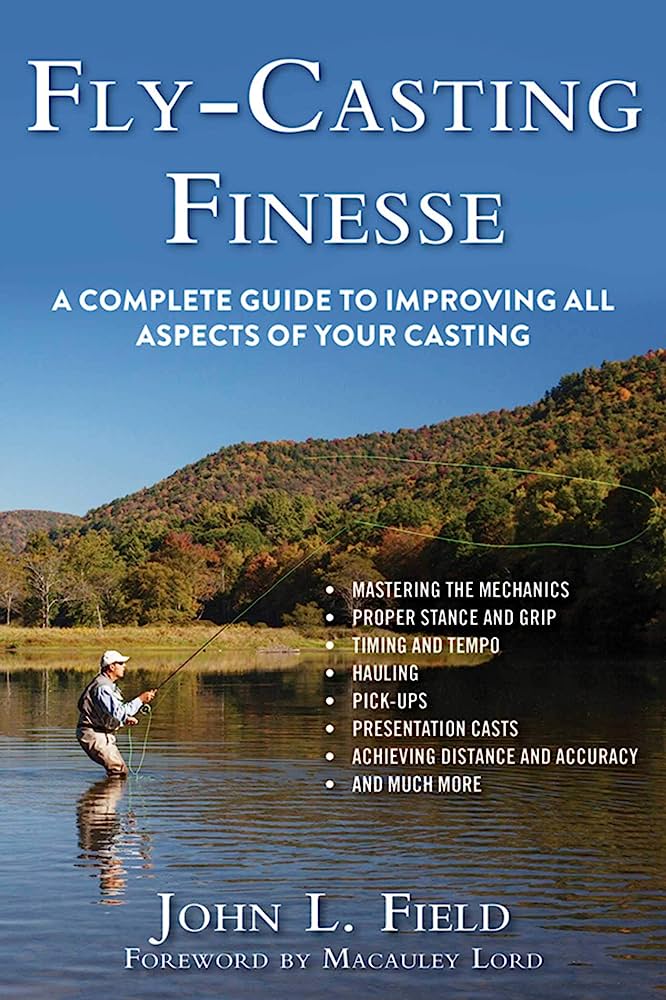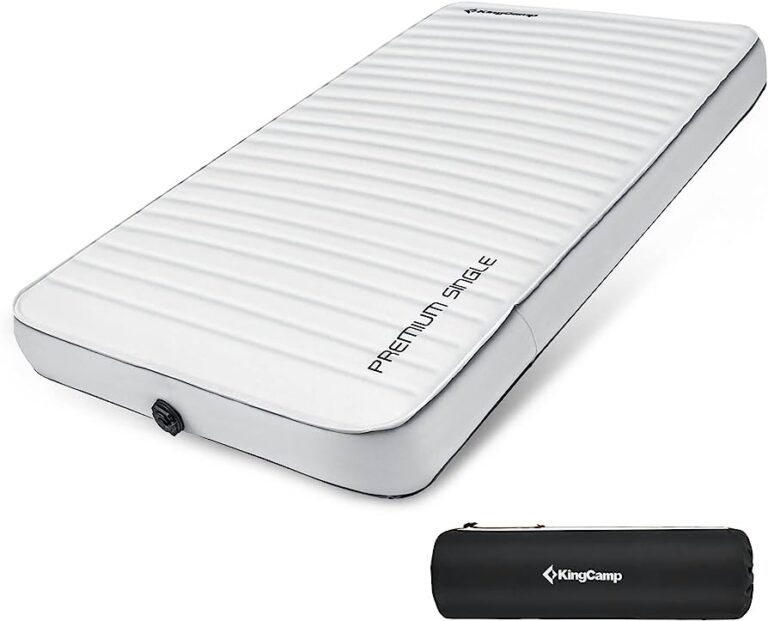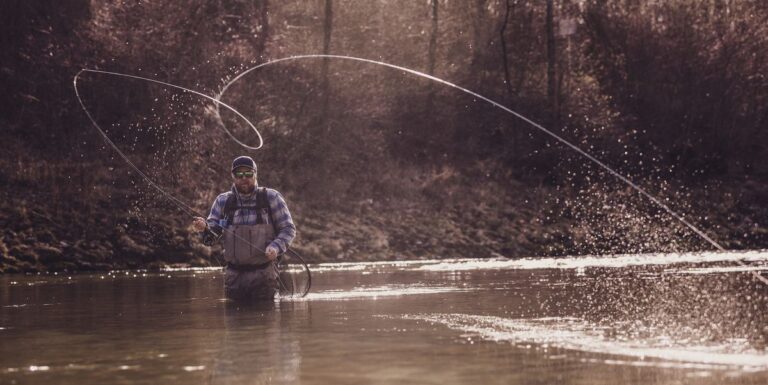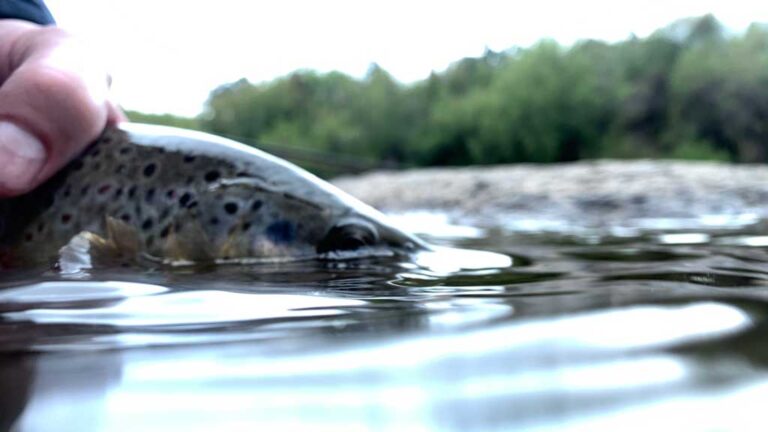Fly fishing reels work by holding and releasing the fishing line as needed, allowing for precise control and casting of the fly. In addition to this basic function, fly fishing reels often include drag systems that create resistance against a fish’s pull, helping to tire and land the fish.
The reels are typically designed with a spool that rotates freely on a central axis, allowing the line to be wound in or let out smoothly. Whether fishing for trout in a mountain stream or targeting bonefish on a saltwater flat, understanding how fly fishing reels work is essential for success on the water.

Credit: www.tagcabosportfishing.com
Understanding The Mechanics Of Fly Fishing Reels
Fly fishing reels are essential tools that play a vital role in the fishing process. They help anglers control the line, retrieve the catch, and create accurate casts. Understanding the mechanics of fly fishing reels is crucial to mastering this elegant and rewarding fishing technique.
In this section, we will delve into the key components of fly fishing reels, their functions, and explore various types of reels and their unique features.
Components Of A Fly Fishing Reel And Their Functions
A fly fishing reel consists of several components, each serving a specific function:
- Spool: The spool holds the fly line, which is crucial for casting and managing the line’s length. It allows the line to unwind smoothly during a cast and controls its retrieval. Ensure the spool has enough capacity for the specific line weight required for your fishing expedition.
- Drag system: The drag system controls the line tension when a fish takes the bait or during the retrieval process. It prevents the line from becoming tangled or snapping. A smooth and reliable drag system is essential to tire out fish and avoid line breakage.
- Drag adjustment: This mechanism allows anglers to fine-tune the resistance of the drag system. It ensures that the appropriate amount of pressure is exerted on the line depending on the size and strength of the fish being targeted.
- Handle: The handle enables anglers to retrieve the line quickly and smoothly. It should be comfortable to grip and easy to turn during the retrieval process.
- Frame and housing: The frame and housing provide structural support to the reel and protect the internal components. They should be lightweight yet durable, minimizing the overall weight of the reel without compromising its functionality.
- Arbor: The arbor refers to the central spindle around which the fly line is wound. A large arbor reel allows for faster line retrieval, reduces line memory, and provides better drag capabilities.
Exploring Different Types Of Fly Fishing Reels And Their Unique Features
There are several types of fly fishing reels available, each with its own unique features catering to specific fishing styles and preferences:
- Single-action reels: These reels are simple and efficient, featuring a one-to-one retrieve ratio. They offer a traditional feel and are suitable for small to medium-sized fish.
- Multiplier reels: Multiplier reels have a gear-driven mechanism that allows for faster line retrieval with a single turn of the handle. They are particularly useful when targeting larger and faster fish species.
- Large arbor reels: Large arbor reels have a larger spool diameter, which results in faster line retrieval and reduced line memory. They are popular among avid anglers and can handle larger fish species.
- Click and pawl reels: Click and pawl reels derive their name from the sound they make when the fish pulls out the line. These reels offer a classic, nostalgic feel and are ideal for smaller fish species and delicate presentations.
- Disc drag reels: Disc drag reels feature a sophisticated drag system, allowing for precise adjustments and smooth line release during powerful runs or sudden movements of the fish. They are versatile and suitable for various fishing conditions and sizes of fish.
Understanding the different types of fly fishing reels and their unique features will enable anglers to choose the one best suited to their fishing style and target species. It’s essential to consider factors such as the fish size, fishing environment, and personal preferences when selecting a fly fishing reel.
With a solid grasp of the mechanics and types of fly fishing reels, anglers can approach their fishing excursions with confidence and enhance their overall fishing experience. So, select the right reel, cast your line, and immerse yourself in the beauty and thrill of fly fishing!
The Importance Of Drag Systems In Fly Fishing Reels
Explaining The Concept Of Drag In Fly Fishing Reels
The importance of drag systems in fly fishing reels cannot be overstated. Drag refers to the mechanical device that controls the amount of friction applied to the fishing line as it is being pulled out by a hooked fish. This feature is crucial because it helps anglers maintain control over their line and prevent it from breaking under the tension created by a fish’s pull.
Here are the key points to understand about drag in fly fishing reels:
- Controlled resistance: The primary function of the drag system is to provide controlled resistance, allowing the angler to tire out the fish gradually instead of risking a sudden line break. By adjusting the drag setting, fishermen can determine how much pressure the fish feels when it pulls against the line.
- Prevents line breakage: The drag system acts as a safety measure, protecting the fishing line from snapping due to excessive force. Too much tension on the line can result in line breaks, lost fish, and even damage to the fly fishing reel. The drag system ensures that the line releases smoothly, preventing sudden jerks or breaks.
- Smooth line retrieval: Drag systems also play a crucial role in smooth line retrieval. While fighting a fish, the reel’s drag should allow for smooth and gradual line retrieval, reducing the risk of line tangling or breaking off in the process.
- Preserves tippet strength: Another important aspect of the drag system is its ability to preserve the strength of the tippet, which is the thinnest part of the fishing line. By providing sufficient resistance, the drag prevents sudden force that could strain or break the delicate tippet material.
Different Types Of Drag Systems And Their Advantages
Fly fishing reels utilize different types of drag systems, each with its own advantages and applications. Understanding these variations can help anglers choose the most suitable reel for their specific needs. Here are the main types of drag systems found in fly fishing reels:
- Click and pawl drag: This traditional style of drag system is simple and reliable. It consists of a clicking mechanism that creates friction using metal parts, allowing for incremental adjustments. Click and pawl drag systems are often found in lightweight, classic-style fly reels. They offer great simplicity, durability, and ease of maintenance. However, they might lack the fine-tuning precision of more modern drag systems.
- Drag disc systems: These drag systems utilize a stack of friction discs made of materials such as carbon fiber or cork. By applying pressure to these discs, anglers can control the intensity of the drag. Drag disc systems provide smooth and consistent drag performance, ideal for handling larger fish or situations where fine-tuning is essential. They can handle more heat and constant pressure, making them suitable for long battles with big fish.
- Hybrid drag systems: Combining the best attributes of click and pawl and drag disc systems, hybrid drag systems offer anglers a versatile option. These systems often employ varying combinations of click and pawl or drag discs to provide a balance of simplicity, smoothness, and adjustability. Hybrid drag systems are preferred by anglers who seek a bit of tradition while still enjoying modern drag features.
- Sealed drag systems: Sealed drag systems are designed to protect the drag components from moisture and debris, making them suitable for saltwater or freshwater environments where corrosive elements could cause damage. These systems are robust, reliable, and low-maintenance, ensuring consistent performance even in challenging conditions.
Considering these factors when choosing the right drag system for your fishing needs will lead to a more enjoyable and successful fly fishing experience. Whether you prioritize simplicity, precision, durability, or all of the above, understanding the concept and types of drag systems will help you make an informed decision.
So, take your time, do your research, and select a fly fishing reel with a drag system that suits your angling style and target species. Happy fishing!
Fly Fishing Reel Retrieval Systems And Their Role
Fly fishing reels play a crucial role in the success of your fishing experience. Understanding how the retrieval systems in fly fishing reels work is essential for any angler. In this section, we will explore the different retrieval systems used in fly fishing reels and their specific roles.
We will also compare the pros and cons of each system to help you choose the right one for your needs.
Understanding The Different Retrieval Systems Used In Fly Fishing Reels
Direct Drive Systems
- Direct drive systems are the simplest and most traditional type of retrieval system.
- With this system, the handle is directly connected to the spool, allowing for instant engagement and quick retrieval.
- Direct drive systems are known for their durability and simplicity, making them a popular choice among beginners and experienced anglers alike.
Multiplying Or Gear Ratio Systems
- Multiplying or gear ratio systems are more complex than direct drive systems.
- These systems use gears to increase the number of revolutions made by the spool for each turn of the handle.
- The gear ratio determines the speed of the retrieval, with higher ratios resulting in faster retrievals.
- Multiplying systems provide anglers with more control and power, especially when dealing with larger or stronger fish.
Anti-Reverse Systems
- Anti-reverse systems greatly assist in preventing the reel from spinning backward upon a fish’s strike.
- They allow for immediate hooksets and eliminate the need to manually switch the reel from retrieve to full-stop mode.
- Anglers benefit from increased efficiency and reduced chances of losing fish due to slack lines during hooksets.
Comparing The Pros And Cons Of Each Retrieval System
- Direct drive systems:
- Pros: Simple, durable, instant engagement, suitable for beginners.
- Cons: Limited control, slower retrieval speed.
- Multiplying or gear ratio systems:
- Pros: Increased control and power, faster retrieval speed.
- Cons: More complex, may require more maintenance.
- Anti-reverse systems:
- Pros: Prevents backward spinning, immediate hooksets, increased efficiency.
- Cons: Limited options available, may require adjustments for specific preferences.
Choosing The Right Fly Fishing Reel Retrieval System For You
Choosing the right retrieval system depends on several factors, including your fishing style, target species, and personal preferences. Consider the following points to help guide your decision-making process:
- Determine your fishing goals and target species. Different retrieval systems are better suited for specific fishing situations and fish sizes.
- Assess your skill level and experience. Beginners may find direct drive systems easier to handle, while more experienced anglers may prefer the versatility of multiplying or gear ratio systems.
- Consider the type of water you will be fishing in. Faster retrieval speeds may be advantageous in areas with strong currents or deep water.
- Evaluate your budget. Some retrieval systems may be more cost-effective than others, so consider your budget constraints when making a decision.
By understanding the different retrieval systems available and comparing their pros and cons, you can select the fly fishing reel retrieval system that best aligns with your needs and preferences. So, get ready to enhance your fly fishing experience with the right reel retrieval system!
Conclusion
Fly fishing reels are an essential component of this ancient angling technique. With their ingenious design and mechanics, these reels allow anglers to cast their lines with precision and control. By understanding how fly fishing reels work, anglers can enhance their fishing experience and increase their chances of success.
The purpose of a fly fishing reel is to store the line and provide drag when fighting fish. By utilizing a simple yet effective mechanism, the reel allows anglers to control the amount of line that is let out, ensuring accurate casting and controlled retrieval.
Additionally, the drag system on the reel plays a crucial role in preventing the line from breaking when a fish is hooked. The materials used in the construction of fly fishing reels have a significant impact on their functionality and durability.
From traditional wooden reels to modern, lightweight, and robust materials like aluminum or carbon fiber, the choices available to anglers are vast. To make the most of your fly fishing experience, it is essential to choose a reel that suits your needs and preferences.
Whether you opt for a traditional reel or a modern, high-tech design, understanding how fly fishing reels work is the key to unlocking a rewarding and successful fishing adventure.






